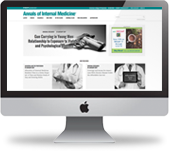Going from good to great in teaching medicine
Most educators say they want to continuously improve their teaching skills, but getting substantive and actionable feedback from learners can be a serious challenge.
Most educators say they want to continuously improve their teaching skills, but getting substantive and actionable feedback from learners can be a serious challenge. Medical education is set up in a hierarchical fashion, and because of this, students and residents are often uncomfortable giving honest feedback to their attending faculty. They are cognizant of the fact that they are being evaluated by that teacher and that their evaluation may impact their final grade or influence their letters of recommendation for residency or (for residents) fellowships or jobs.
They therefore tend to avoid giving faculty constructive feedback about their performance as teachers in the clinical setting. When a faculty member meets with a student or resident at the end of a rotation, the feedback is often, “You were great and I don't really have anything for you in terms of feedback.” As an educator seeking to improve, that faculty is walking away from a clinical rotation without meaningful action items for improvement from the people who are often in the best position to provide them with this feedback and these action items—the learners.
In order to improve the quality of constructive feedback obtained from learners, teachers should meet with learners at the beginning of the rotation, as well as at midpoint and at the end. After obtaining learner goals for the rotation, teachers should tell learners about their own goals for improvement, being as specific as possible about these goals. The teacher should emphasize that it's safe to give them feedback about what they're working on as well as to point out other areas for improvement. This conversation can open the door to the fact that the teacher has a “growth mindset” as well as role model the teacher's aspirations to improve their teaching. The vast majority of our learners respond positively to this approach. The educator should meet with learners one-on-one at the approximate midpoint of the rotation to both give their learners feedback about their progress on the rotation as well as to seek feedback from those learners. “Remember those goals I had? How do you think I'm doing with those?” allows a safe space for the learners to give feedback without fear of retribution.
In these settings it's vital to have an open mind about the feedback an educator is receiving. I have sometimes been completely blindsided by feedback I've received and have sometimes felt defensive about its content. If I react by shutting down, dismissing the feedback, or becoming defensive, the not-so-subtle message to the learner is that they shouldn't have given the feedback or that they overstepped their role as a subordinate on the team. At worst, they will be anxious about how this apparent transgression is going to affect their grade, rotation evaluation, or letter of recommendation. It is therefore important to create a safe, nonjudgmental environment where it's normal to give and to receive feedback, even if it catches you off guard or you ultimately question its validity.
In attempting to progress from being a good teacher to a great teacher, it's also very helpful to observe other teachers, particularly the best ones at your institution or other nearby institutions. Other teachers are almost always flattered by the request to (silently) follow them on rounds and I have never had anyone turn me down. For the observer, it is very low stress since you're not responsible for any of the patients on the service and can just relax and soak up the teaching methods you're observing on rounds. You're a “fly on the wall” during these rounds, speaking only when spoken to and watching education happen in a way you seldom have time to when you're on service managing a collection of sick patients.
Another high-yield way to analyze and improve your teaching is to videotape or audiotape your rounds. This activity often sounds more complicated than it actually is. For audiotaping you can use the memo function on your phone, or purchase an inexpensive handheld digital recorder with a pop-out USB device for easy downloading of the recording. You should always obtain verbal permission from members of the team to record, and at some institutions you may need to obtain written permission from the patient being recorded (if the recording is happening at the patient bedside instead of in the hallway or conference room). Once you turn on the recorder and put it down on a table, team members tend to forget they're being recorded within a few minutes, providing fairly natural behavior by all parties on the team. You can then listen to the recording later and give yourself feedback about how you think you did, or even send the recording to a mentor and ask them to listen and provide you with feedback.
A similar approach can be used for video recording—obtaining permission from the patient and team members and having someone else on the team record for an eight- to 15-minute encounter using either your camera phone or a digital camera. Videos tend to provide more information about expressed body language of learners and patients as teaching is occurring than audio recording does, but tend to be a more invasive format in terms of making team members more self-conscious about being recorded. In addition to taping teaching in the clinical environment, I also encourage educators to video or audio tape at least 15 minutes of any teaching conferences that they give, as this also provides great fodder for identifying areas for improvement in the delivery of teaching.
Medical education in the clinical environment tends to be a unique form of education because so much of teaching and learning is patient-proximate. You're either at the bedside or you're in the conference room talking about disease and how to diagnose and treat that disease in patients. There's a human being attached to the knowledge that we're trying to impress on our learners, which creates this unique bond and memorability to that knowledge. This is what makes the knowledge “stick” in learners' brains.
However, all educators should recognize that no teacher is perfect at conveying this knowledge and that hard work and dedication to continuous teaching improvement are essential for our own growth as teachers, as well as for providing our learners with the highest quality education and, by extension, our patients with the highest quality of care.



